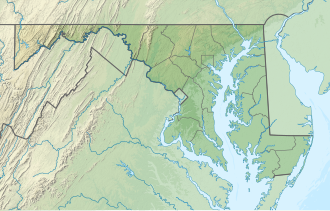| St. Clement's Island State Park | |
|---|---|
 Commemorative cross and rebuilt Blackistone Lighthouse | |
| Location | Saint Mary's County, Maryland, United States |
| Coordinates | 38°12′40″N76°44′44″W / 38.21111°N 76.74556°W [1] |
| Area | 62 acres (25 ha) [2] |
| Elevation | 10 ft (3.0 m) [1] |
| Established | 1962 |
| Administered by | Maryland Department of Natural Resources |
| Designation | Maryland state park |
| Website | Official website |
St. Clement's Island Historic District | |
 | |
| Nearest city | Leonardtown, Maryland |
| Area | 1,499 acres (607 ha) [3] |
| NRHP reference No. | 72001484 |
| Added to NRHP | April 10, 1972 |
St. Clement's Island State Park is a publicly owned historic preservation and recreational area that encompasses St. Clement's Island, an uninhabited Potomac River island lying one-half mile southeast of Colton's Point, St. Mary's County, Maryland. The state park features a 40-foot stone cross dedicated to the beginnings of freedom of religion in the United States as well as a reconstruction of the historic Blakistone Island Light. [4] It is the central feature of the St. Clement's Island Historic District that was listed on the National Register of Historic Places in 1972. [5]



